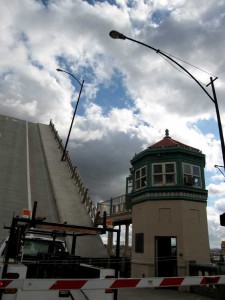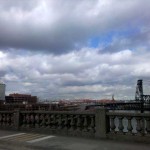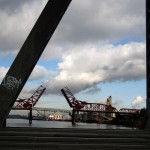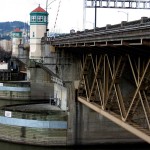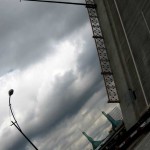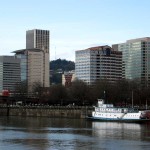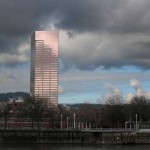The Bridges of Multnomah County
We had the opportunity recently to chaperone a very interesting on-foot tour of some of Portland’s fabulous historic bridges. Zelda’s school scored Portland bridge historian, Sharon Wood Wortman, to lead the tour and it was informative for the pint-sized and adult-sized alike.
Thankfully, the weather cooperated and it didn’t rain. In fact, as you can see, we were blessed with big light for photos.
We started our tour at the Oregon Department of Transportation and got to check out all of their bridge cameras on the big screen. The kids were even more impressed with the remote-controlled conference table, where you could press a button, and the center of the table would rise up to reveal a bank of 12 phones to be used during weather/transportation emergencies.
Next, we walked over the Steel Bridge as a freight train rumbled past us, and off in the distance, we could see the Broadway Bridge just beginning to open. It was lovely.
These lucky third graders had the privilege of ascending into the the control tower of the Burnside Bridge, and they also got to lay down on the road while the bridge was opened next to them solely for their benefit. (I’m sure the commuters were wondering what the hell was going on — no boats coming through, bridge open, kids laying on the road screaming as if they were “road kill.”)
We learned:
- There are something like 781 Douglas Fir trees under the footings for the Burnside Bridge. (Those are waterproof and rated for 100 years, right?)
- The St. John’s Bridge was originally supposed to be painted with black and yellow stripes. (Thank God they went with the green.)
- The Broadway Bridge was the longest double leaf bascule bridge in the world when it was built.
- The Fremont Bridge is the second largest tied-arch bridge in the world.
